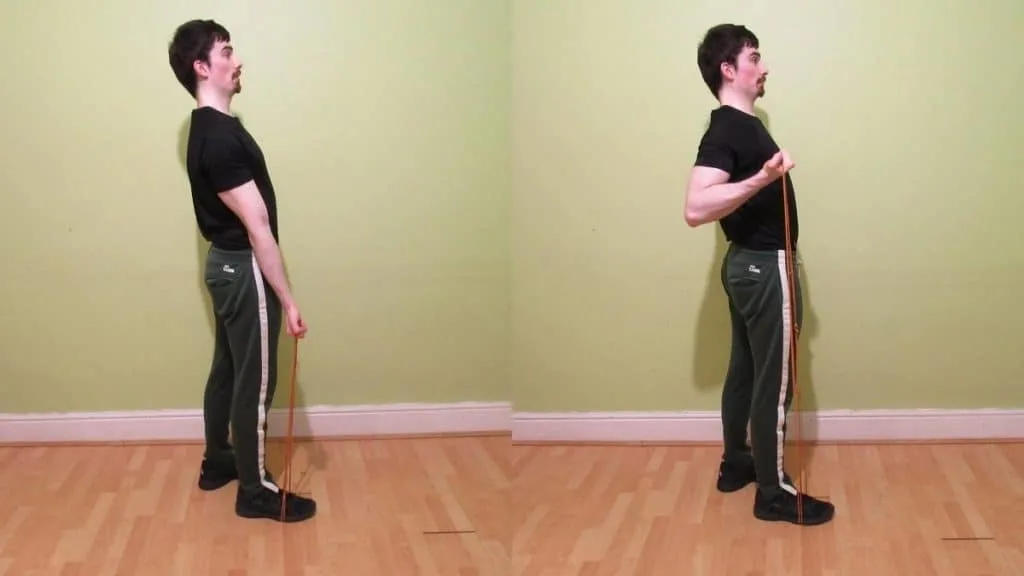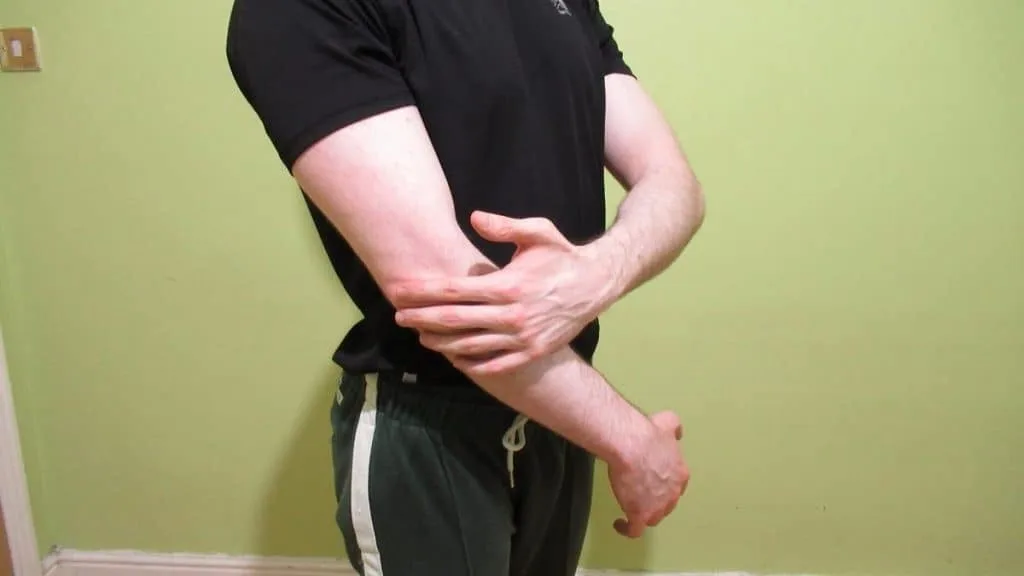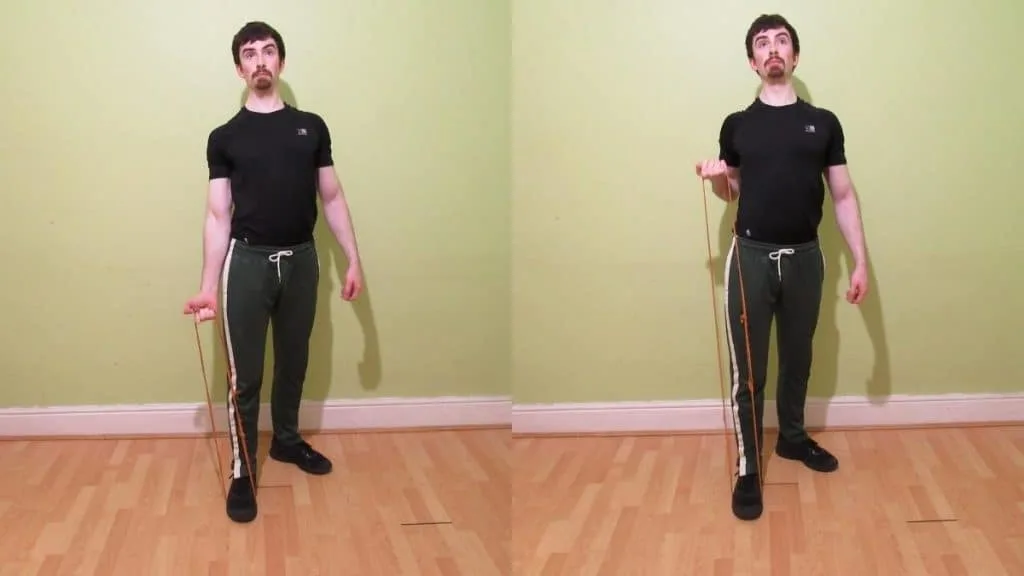The resistance band drag curl is a handy exercise for building the bicep muscles because you can perform it absolutely anywhere. That’s why band curls are so convenient—they require only minimal equipment.
So if you don’t fancy buying weights or going to the gym to do a barbell drag curl, then be sure to check out the banded drag curl instead. Your biceps will thank you for it.
Related Exercise: EZ bar drag curl
Resistance band drag curl exercise details
- Main Muscles: Biceps brachii
- Secondary Muscles: Brachioradialis, brachialis, forearm flexors
- Exercise Type: Strength
- Exercise Mechanics: Isolation
- Difficulty Level: Beginner
- Equipment Needed: Resistance bands
How to do resistance band drag curls
- Stand in the middle of your resistance band to secure it to the floor.
- Grab the handles with an underhand grip and hold them by your sides.
- Lift the handles toward your shoulders by dragging your elbows behind your body.
- Squeeze your biceps as hard as you can as they come into contact with the undersides of your forearms.
- Hold the contraction for a moment and then lower the band handles under control until your elbows are almost locked out.
- Repeat for 3-4 sets of 15-30 reps.
Resistance band drag curl advantages
Drag curls make a great addition to any bicep band workout because they train the long head of the biceps, which is an area that many lifters need to work on. Here’s what else the band drag curl has going for it.
It’s really convenient

Whether you like to train in your living room or whether you prefer to get your pump on at the bench, you can always rely on the resistance band drag curl.
Yes, you can do this muscle-building movement absolutely anywhere. All you need is a half-decent resistance band set and a tiny bit of space.
This makes banded drag curls particularly useful if you travel a lot and don’t always have access to free weights to do a drag curl with dumbbells and the like. It also makes it easier to stick to your workout routine because you don’t have to skip training sessions when you can’t get to a gym.
It pumps up your biceps

Resistance bands get heavier the more you stretch them. This means that banded drag curls pose the most challenge when your biceps are maximally contracted, which in turn creates an intense muscle pump in your biceps.
To maximize the effectiveness of this pump, it’s best to use high reps so that you can generate a good burn in your biceps, which is the sensation that you feel when your arms become filled with lactic acid from the repeated muscular contractions.
Similarly, it’s a good idea to avoid locking out your elbows completely so that you can keep the tension on your biceps. Usually, I recommend doing full reps with a complete elbow lockout. However, when you’re performing metabolite training, maximizing the pump (i.e., the amount of lactic acid in the muscle) is the primary goal.
If you want to lift heavy, then you can do a drag curl on the Smith machine instead, which is much better suited to low rep training.
On the other hand, you can give the reverse grip drag curl a go if you already have good biceps but comparatively weaker brachioradialis and brachialis development.
It’s easy on your joints

Like band hammer curls, resistance band drag curls naturally provide very joint-friendly tension because your feet are stabilizing the band for you. Therefore, your tendons, joints, and ligaments don’t get put under as much strain because bands are easier to balance than free weights.
Of course, this is ideal if you’re rehabbing or just generally have aches and pains from an extensive weight lifting career. However, resistance bands are doubly beneficial because they enable you to focus purely on the working muscle since you only have to put minimal effort into stabilizing the bands.
You can also do a preacher curl with a band or try the band spider curl if you have access to additional equipment and want to work your biceps from a different angle.
Read More: Banded back and bicep workout
In conclusion

If you only have access to basic equipment or can’t get to a gym, then resistance band drag curls are an ideal exercise. Not just because you can do them anywhere, but also because they’re incredibly straightforward to perform, which is ideal for beginners who are still learning the resistance training ropes.
Specifically, band drag curls are highly conducive to the use of good form because you can’t swing the bands up with your shoulders when you’re dragging them up your body.
For best results, make sure to perform high repetitions so that your biceps get enough stimulation in order to grow bigger and stronger. Band drag curls are very easy—effortless, even—in the initial phase of the rep, but they become much more challenging as your biceps near their fully contracted position. As such, you pretty much have to use high reps in order to compensate for the relatively poor resistance curve.

